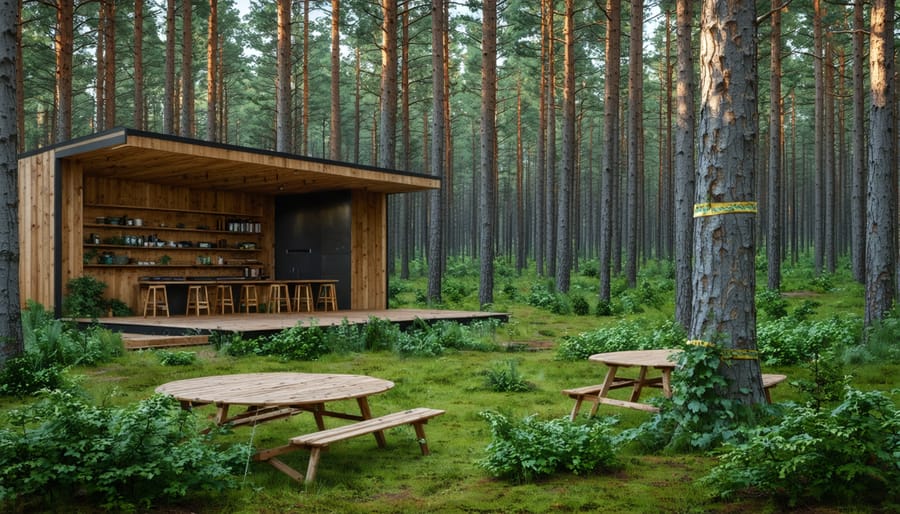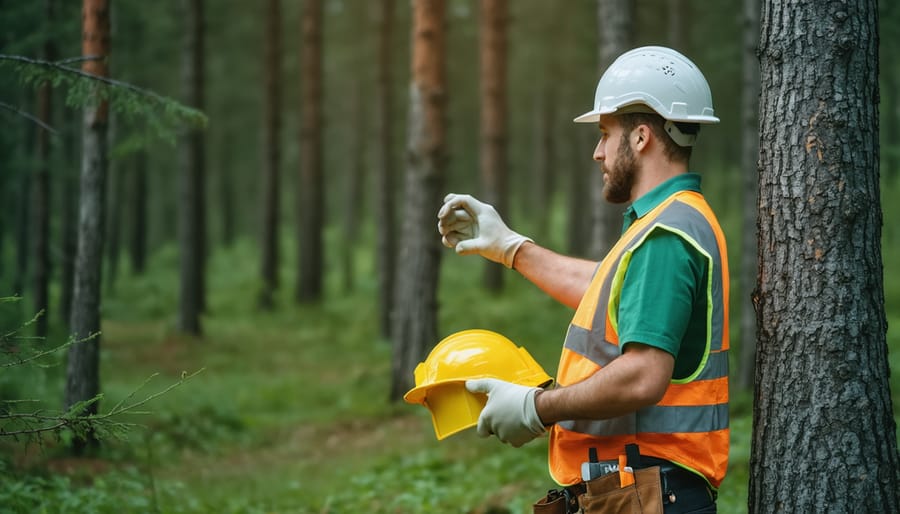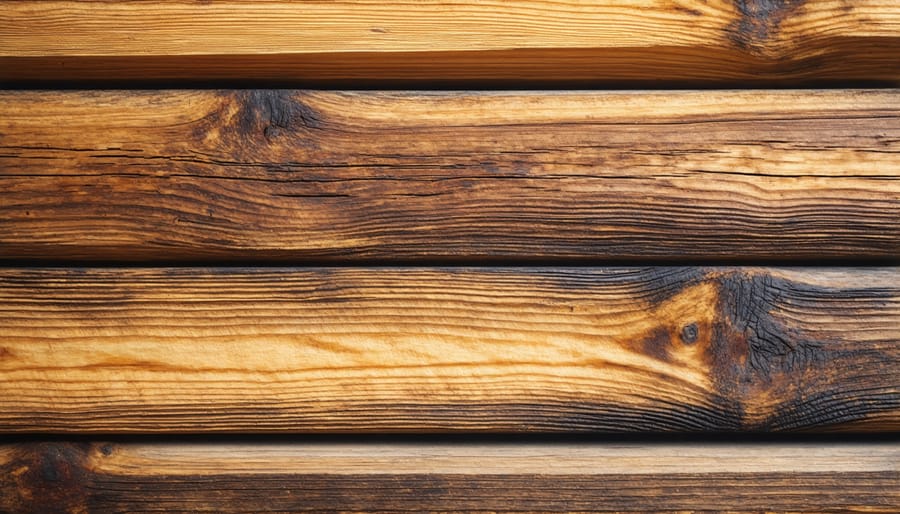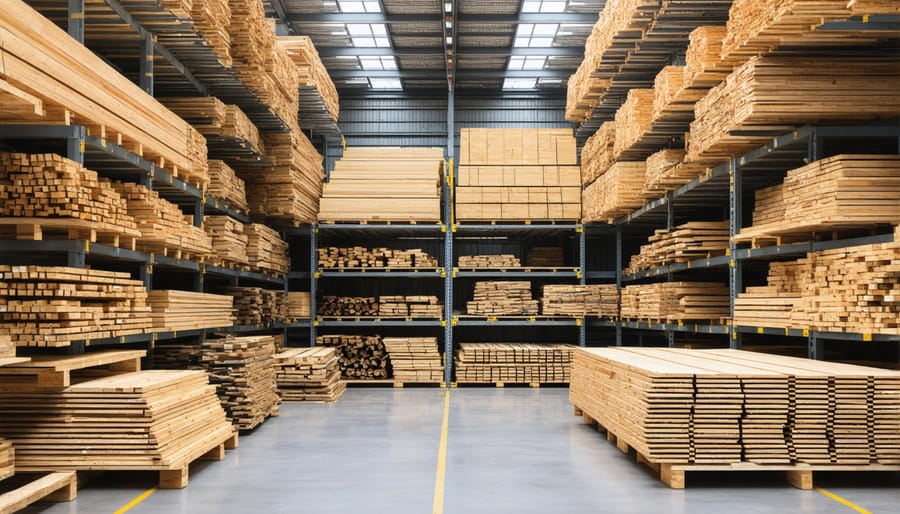Smart Forestry Practices That Make Your Outdoor Workspace Last Generations

Transform your forest management practices by implementing selective harvesting techniques that maintain biodiversity while generating sustainable timber yields. Create an eco-friendly outdoor workspace using responsibly sourced wood products certified by recognized organizations like FSC or PEFC. Establish buffer zones along waterways to protect aquatic ecosystems and prevent soil erosion, while rotating harvest areas to ensure forest regeneration cycles. Monitor forest health through regular assessments of tree species diversity, wildlife populations, and soil quality to adapt management strategies for long-term sustainability. These proven practices not only preserve forest ecosystems but also provide economic benefits through continuous, responsible resource management that supports both environmental health and timber production needs.
Selective Harvesting for Outdoor Projects
Tree Selection and Timing
Selecting the right trees for sustainable forestry requires careful consideration of both native species and local ecosystem needs. Choose trees that naturally thrive in your climate zone and soil type, as these will require less intervention and maintain better health over time. Consider a mix of fast-growing species like poplar or pine alongside slower-growing hardwoods such as oak or maple to ensure continuous forest coverage.
Timing is crucial for both planting and harvesting. Plant new trees during the dormant season, typically late fall to early spring, when the soil retains adequate moisture and temperatures are moderate. For harvesting, winter is often ideal as frozen ground minimizes soil disturbance and reduces impact on surrounding vegetation. Additionally, trees harvested during their dormant period typically have lower moisture content, making them better suited for timber use.
Consider implementing a rotating harvest schedule, where different sections of your forest are harvested at different times. This approach maintains continuous forest cover, protects wildlife habitats, and ensures a steady supply of timber while allowing for natural regeneration. Always leave enough mature trees to support natural seeding and maintain forest biodiversity.

Local Sourcing Benefits
Choosing locally sourced timber for your outdoor structures offers multiple benefits that extend beyond environmental impact. When you work with local suppliers, you can personally inspect the wood quality before purchase and ensure it meets your specific needs. Transportation costs and carbon emissions are significantly reduced since the materials don’t need to travel long distances.
Local sourcing also supports your community’s economy and helps maintain sustainable forestry practices in your region. Many local suppliers maintain direct relationships with nearby sawmills and can provide detailed information about the wood’s origin and harvesting methods. This transparency helps you make informed decisions about the materials you’re using.
Additionally, locally sourced timber is often better acclimated to your area’s climate conditions. This natural adaptation can result in better performance and longevity for your outdoor structures. You’ll also have easier access to replacement materials if needed, and many local suppliers offer valuable advice about wood maintenance specific to your region’s weather patterns and environmental challenges. This personalized guidance can help extend the life of your outdoor projects while maintaining their aesthetic appeal.
Sustainable Wood Treatment Methods
Natural Preservatives
When it comes to protecting your wooden structures naturally, several eco-friendly options stand out. Linseed oil, derived from flax seeds, creates a protective barrier while enhancing the wood’s natural beauty. It’s particularly effective for outdoor furniture and structures, penetrating deep into the wood fibers to prevent moisture damage.
Another excellent natural preservative is tung oil, which offers superior water resistance and creates a durable finish that many homeowners prefer for its rich, amber tone. For those concerned about insects, cedar oil serves as both a preservative and natural pest deterrent, making it ideal for storage structures and garden features.
Beeswax mixed with natural oils creates an effective sealant that’s completely non-toxic and safe for both people and the environment. This combination not only protects the wood but also gives it a beautiful, natural sheen. For areas prone to moisture, a mixture of vinegar and rosemary oil can help prevent mold and mildew while maintaining the wood’s integrity.
These natural alternatives not only protect your wooden structures but also contribute to a healthier environment by avoiding harmful chemicals typically found in conventional preservatives. They’re easy to apply and maintain, making them perfect for DIY enthusiasts.

Weather Protection
Protecting wooden structures from the elements is crucial for sustainable forestry practices, and there are several eco-friendly methods to achieve this. Start by selecting weather-resistant materials and applying natural sealants derived from plant-based sources. Cedar oil and beeswax mixtures provide excellent protection while maintaining the wood’s natural beauty and avoiding harmful chemicals.
Consider installing proper drainage systems and elevating wooden structures slightly off the ground to prevent water damage. Adding roof overhangs of at least 12 inches helps shield walls from rain and snow, while proper ventilation prevents moisture buildup that can lead to rot and mold.
Natural water-repellent treatments like linseed oil or tung oil can be reapplied annually, creating a protective barrier without compromising the environment. These treatments actually enhance the wood’s natural properties rather than masking them with artificial compounds.
For additional protection, consider installing rain screens or using sustainably sourced rubber membranes in high-risk areas. Remember to regularly inspect and maintain these protective measures, addressing any issues promptly to extend the life of your wooden structures while minimizing resource waste.
Waste Reduction Strategies

Material Optimization
Material optimization in sustainable forestry starts with careful planning and precise measurements. By creating detailed cutting lists and layouts before starting your project, you can significantly reduce wood waste. Consider using software or apps designed for wood optimization, which can help calculate the most efficient cutting patterns for your lumber.
When working with wood, implement the “measure twice, cut once” principle to avoid costly mistakes. Save larger offcuts for future projects, and use smaller pieces for shims, stakes, or decorative elements. Many woodworkers successfully repurpose short ends for making small boxes, picture frames, or garden markers.
Consider working with standard lumber dimensions when designing your projects. This approach naturally minimizes waste and often reduces costs. For unavoidable offcuts, establish a sorting system by size and type, making it easier to find and use these pieces later.
Partner with local woodworkers or community workshops to share resources and offcuts. Some areas have wood recycling programs that accept clean lumber scraps, ensuring that even unusable pieces don’t end up in landfills.
Recycling and Repurposing
In sustainable forestry, nothing goes to waste. Wood scraps and sawdust from milling operations can be transformed into mulch for landscaping or compressed into pellets for biomass heating systems. Tree bark finds new life as decorative ground cover or pathway material, while smaller branches are chipped for use in composting or soil amendment.
Many forestry operations now partner with local artisans and furniture makers who can use irregular cuts or “imperfect” pieces for unique, character-rich creations. Even fallen leaves and pine needles are collected and composted, creating nutrient-rich soil for forest regeneration projects.
Creative repurposing extends to logging equipment maintenance, where used oil is often recycled for equipment lubrication or heating. Some operations even turn larger wood waste into biochar, a sustainable soil enhancement that helps sequester carbon while improving soil quality.
For homeowners and DIY enthusiasts, consider using reclaimed wood from sustainable forestry operations for projects like garden beds, outdoor furniture, or decorative elements. This approach not only gives materials a second life but also adds unique character to your outdoor space.
Maintenance for Longevity
Regular maintenance is key to extending the life of wooden outdoor structures while maintaining their eco-friendly qualities. By following sustainable maintenance practices, you can create a sustainable outdoor workspace design that lasts for generations.
Start with quarterly inspections of all wooden surfaces, checking for signs of wear, moisture damage, or pest infestation. Address any issues promptly using environmentally friendly solutions. For example, tackle mold growth with a mixture of vinegar and water instead of harsh chemical cleaners.
Apply natural wood preservatives annually to protect against weathering. Consider using plant-based sealants or beeswax-based products that offer excellent protection without harmful environmental impact. These treatments not only preserve the wood but also enhance its natural beauty.
Keep wooden structures well-ventilated by maintaining proper air circulation. Remove debris, leaves, and branches regularly to prevent moisture buildup. Install adequate drainage systems around your structures to direct water away from wooden foundations.
When repairs are needed, use reclaimed or sustainably sourced wood that matches the original material. Fill small cracks with natural wood putty and reinforce joints with eco-friendly adhesives. Remember to sand repaired areas smoothly to maintain the structure’s aesthetic appeal.
Protect wooden surfaces from direct sunlight exposure when possible by strategically placing shade elements or using UV-resistant finishes. This simple step can significantly reduce weathering and extend the life of your outdoor wooden structures while maintaining their sustainable qualities.
Sustainable forestry practices are more than just environmental buzzwords – they’re essential strategies that protect our forests while meeting our wood needs. By implementing selective harvesting, replanting programs, and protecting biodiversity, we create a balanced approach that benefits both nature and human requirements. These practices have shown remarkable success, with managed forests demonstrating increased resilience to climate change and better wildlife habitat preservation.
The long-term impact of sustainable forestry extends beyond environmental benefits. Communities benefit from stable employment in forestry sectors, while landowners enjoy sustained income through responsible resource management. The certification systems that verify these practices have helped create market demand for sustainably sourced wood products, encouraging more forest owners to adopt these methods.
Looking ahead, sustainable forestry practices will play an increasingly vital role in combating climate change, preserving biodiversity, and ensuring a steady supply of wood products for future generations. By embracing these methods today, we’re investing in healthier forests and a more sustainable future for all.

